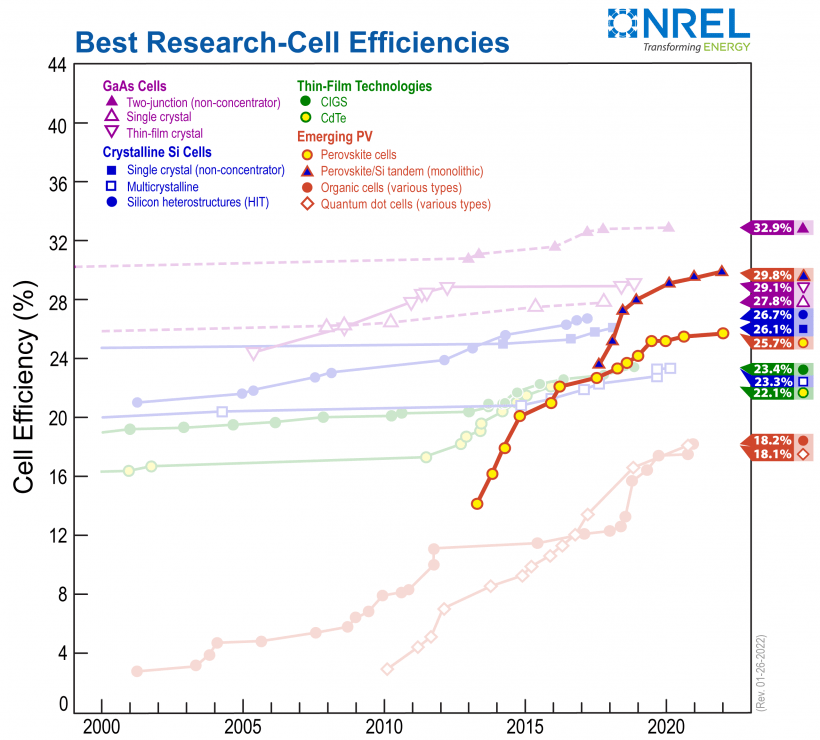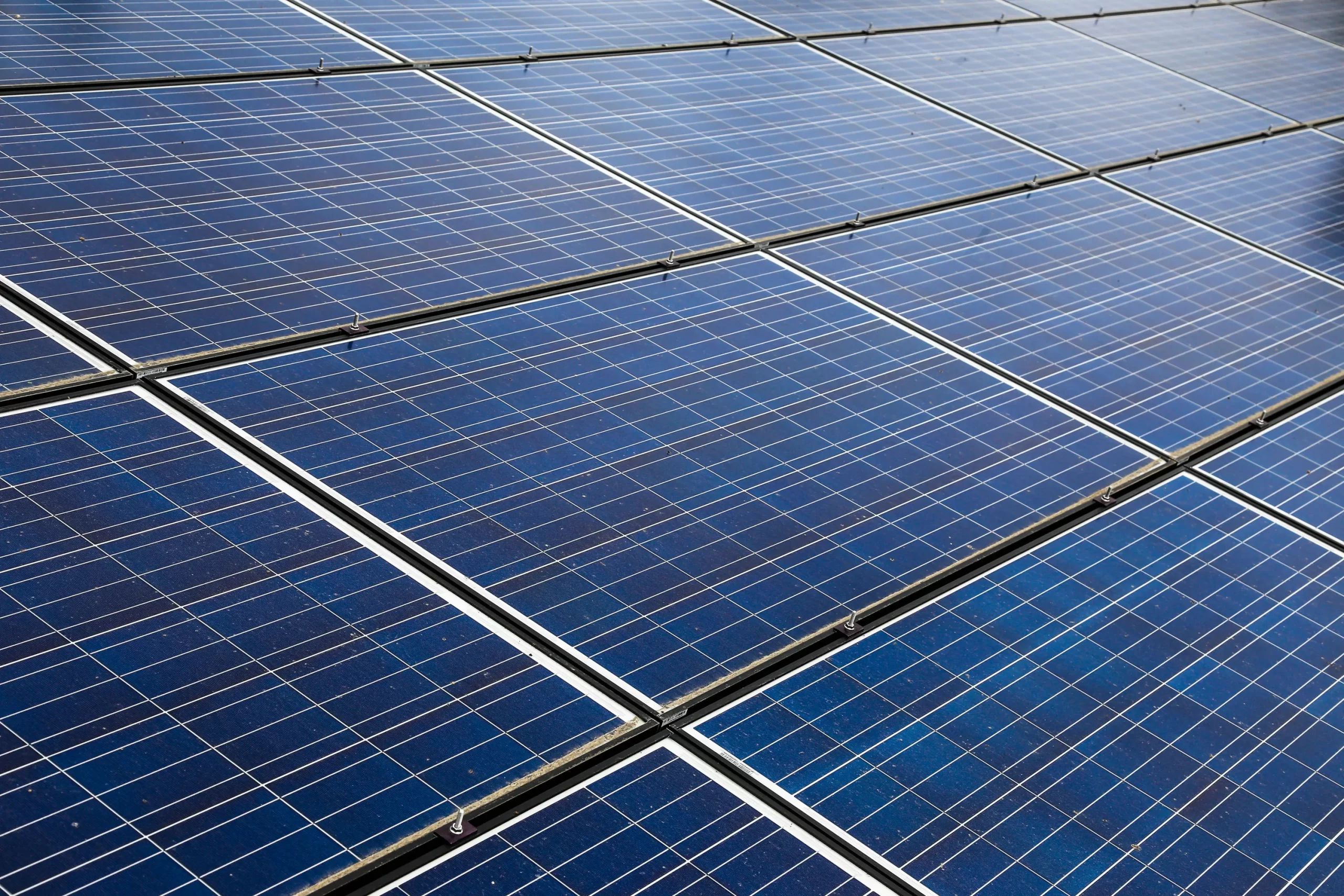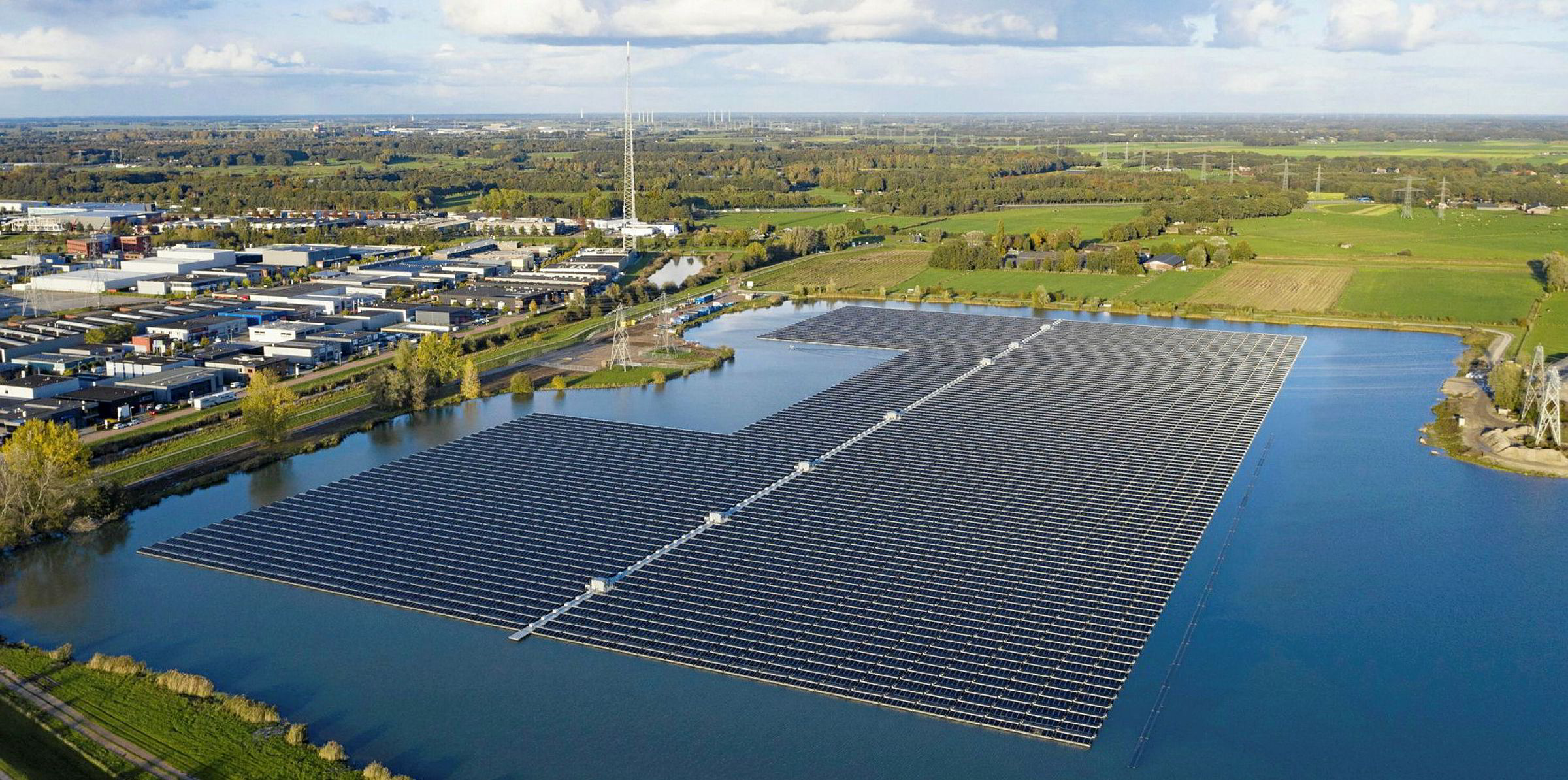Solar cell technologies are evolving fast since we have witnessed three different technologies over the past ten years initiating with the PERC, crossing the N-Type (TOPCon and HJT), and reaching the perovskite solar cell that is still under development in the R&D to boost commercializing it and make the manufacturing viable and affordable.
The main objective of the R&D is to enhance the efficiency and the lifetime of the solar cell, which increases the energy yield within such a solar area.
What is the perovskite solar cell?
The name “perovskite” comes from the nickname for their crystal structure. The magic word is the Metal-Halide, which is considered a class of exceptional semiconductors that are adoptable in high-efficiency solar cells, light-emitting diodes, and other photosensitive applications. Some advanced solar cell laboratories started to exploit the outstanding photophysical properties and try to facilitate the processing of the Perovskite cells in mass production.
According to the Solar Energy Technologies Office (SETO) at the U.S. Department of Energy, in 2020, Perovskite solar cells displayed excellent improvement with fast increases in efficiency of 29.52%.
Perovskite solar cell developer in Oxford Photovoltaics (PV) passed its industry cell efficiency record after months of developing tandem silicon heterojunction and perovskite solar cells.
What are the challenges facing the perovskite?
While perovskite solar cells have evolved rapidly, PV manufacturers still have several challenges before introducing the perovskite solar module at premium prices competing with N-type solar cells. The first milestone of perovskite life development is to have LCOE (Levelized Cost of Electricity) meet or lower than the LCOE produced from the old solar technologies.
The main challenges faced in introducing the perovskite solar modules to the primary PV market are briefing the following:
- Stability and Durability: The stability and long lifetime of Perovskite-based devices may prove to be their weaknesses. The goal in the R&D is to surpass a minimum of 20-year living span for the application. The moist oxygen, light, and heat can cause a chemical reaction that degrades the perovskite cell. Developing long-term stability of large-area modules for generation is necessary to achieve widespread use.
- Power Conversion Efficiency at the mass production: The efficiency displayed by perovskite cells has been high at the lab scale. However, scaling down the same efficiency while dealing with large Perovskite cells is still a hurdle to commercializing such cells.
- Manufacturability: A cost-sufficient mass production process is crucial to release the Perovskite module to the solar markets. Furthermore, preparing highly efficient perovskite materials for industry-scale production to be identical to the current cell technologies like PERC, TOPCon, and HJT is a matter of difficulty. The available manufacturing processes at the lab scale are challenging to replicate on a large scale.
- Technology Validation and Bankability: Lastly, confirming the reliability and bankability of perovskite technologies is crucial for their commercialization to be bankable by financial institutions. Consequently, the technology is not mature enough since the related data from the R&D are insufficient to guarantee appropriate operational behavior over the long run. A need for developed standardization, designed within the perovskite technologies industry, is highly required to convince involved market investors and financiers.
- Environmental hazardous: Furthermore, one of the main elements that make large-scale commercialization difficult is that perovskite cells contaminate lead material considered harmful to the environment.

What are the advantages and disadvantages between the solar cells (TOPCon, Heterojunction, XBC, Perovskite Tandem)?
- TOPCon (Tunnel Oxide Passivated Contact)
Pros:
- High bifaciality, and low temp. coefficient but higher than the HTJ.
- High weak-light performance.
- Low LID &LETID.
- Mature technology and accepted by the market, availability of the production equipment, and high compatibility in the industrial chain.
- Cost-sufficient. Cons:
Higher temperature process and almost double of the manufacturing phases compared with HJT.
- Heterojunction
Pros:
- Higher bifaciality, and better temp coefficient comparing with the TOPCon and the PERC.
- High low-light response.
- LOW LID &LETID, and PID.
- Low temperature production process.
- Almost half of the manufacturing phased comparing with TOPCon.
Cons :
- High initial investment & high raw material costs.
- Almost 80% manufacturing equipment upgrade comparing with the TOPCon.
- Sensitive to water vapour penetration and high requirement to encapsulation.
- XBC: Pros:
- High efficiency with no obstruction of the lighted surface.
- More beautiful design, no busbars on the front, suitable for rooftop residential application. Cons:
- Bifaciality < 60% which is weigh lower than the TOPCon and the HJT.
- Complexity in the manufacturing process, low production yield, and high production cost.
- Perovskite Pros:
- High theoretical efficiency up to +30%.
- Suitable for BIPV. Cons:
- Low reliability on the long run.
- Challenges on mass production of wafer perovskite.
- High initial investment for the modules production.
Conclusion
Technologies in the PV market is dynamic to reach PV cells with high efficiency and cost sufficient to be available for residential, C&I, and Utility-Scale solar applications. The PV-Predictor program of PACT seeks to overcome these difficulties through field and lab testing, the development of accelerated test protocols, and improvement in mass production and reliability of PV systems while testing in real-operating conditions.




